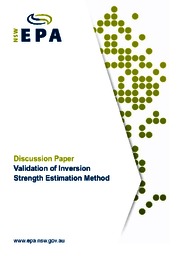The NSW Industrial Noise Policy includes an expectation that noise limits will apply under weather conditions characteristic of an area, including atmospheric temperature inversions that can increase noise levels, particularly at night when people are most sensitive to noise.
Inversion strengths are expressed in terms of the change in temperature of the atmosphere, in degrees Celsius (°C), over the first 100m from ground level vertically up (degC/100m, or °C/100m). For this it is necessary to measure or have an estimate of the temperature at 100m above ground level (agl), which can be costly and difficult to obtain directly. This project investigated some methods for estimating inversion strengths from measurements at heights less than 100m agl.
Atmospheric thermal inversions measured in the Collie Basin, WA
Herring Storer analysed some historical temperature profile measurements from Western Australia to make initial evaluations of alternative approaches for estimating inversion strengths.
Field validation of inversion estimation techniques
Access MQ directly measured temperatures simultaneously at 2, 10, 60 and 100m agl at Camberwell in NSW and assessed the accuracy of inversion estimates made by extrapolating from the temperatures measured at different heights.
Discussion paper
The Herring Storer and Access MQ reports demonstrate that significantly different inversion strength estimates can be calculated depending on the heights from which the temperature values are taken. This has implications for environmental regulators, community and industry. The discussion paper makes a number of policy, technical and regulatory recommendations which the EPA is considering.
Download
- Discussion paper: Validation of the inversion strength estimation method (140011invstrength.pdf, 1.7MB)
- Appendix B: AccessMQ raw data (AppBAccessMQdata.zip, 6.9MB)
- Atmospheric thermal inversions measured in the Collie Basin, WA (ThermInvRptHS.pdf, 892KB)
- Field validation of inversion estimation techniques (InvEstRptAccessMQ.pdf, 1.1MB)
More information:
The format and structure of this publication may have been adapted for web delivery.


